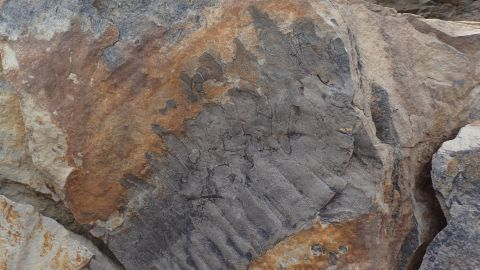An insect weighing 50 kg ... the discovery of a fossil of the largest millipede that ever lived on Earth

In 2018, while a former PhD student at the University of Cambridge was accidentally passing by a place in Northumberland on the coast of northeastern England, he made a startling discovery that prompted a team of scientists at the university to go and examine it themselves. Large cracks in it revealed a huge fossil inside.
After examining it, it was found that the fossil of a huge millipede worm of the type of arthropods, which is a division of the animal kingdom that includes insects, crustaceans, and others, is considered the largest fossil of a millipede worm that has been discovered so far, the length of the fossil is 75 centimeters, but according to the team of scientists, the worm itself will be the same size It is much larger, and it is likely that it reached 2.7 meters in length and weighed about 50 kilograms, according to Science alert .

We are very fortunate to know about this discovery, as many of the circumstances surrounding it were supposed to not qualify for access to it. The worm had an exoskeleton that is believed to have melted inside the stone and then filled with the stone and sand, which is what caused the fossil to be preserved for that long and this method of preservation It is very rare, and the area in which the fossil was found has not been found in any fossil before, and the most amazing thing is that, according to the statements of Neil Davies, a professor at the Department of Earth Sciences at the University of Cambridge, finding a huge fossil of millipedes is very rare because the worm When it dies, its body begins to disintegrate, so it is likely that the fossil is of one of the shells that fell from the animal while it was growing.
This type of animal is known to scientists so that they found two similar fossils in Germany that are smaller in size, but what is new for them is the discovery that this type of invertebrate - that is, that does not have a backbone - can reach these enormous sizes, contrary to all expectations, and this is what scientists are trying to study now. And find out its causes. Millipedes lived for 45 million years in the Carboniferous period around the equator and became extinct about 300 million years ago. The exact cause of their extinction is not known, but it is likely that it occurred due to the emergence of reptiles that spread and multiplied in numbers at that time.
Source: websites

